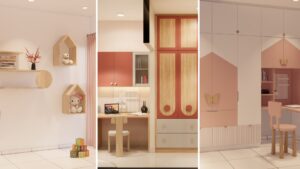Statement furniture can turn an ordinary room into something extraordinary. Whether it’s a bold sofa, an oversized coffee table, or a uniquely designed chair, these standout pieces draw attention and add personality to your space. However, incorporating statement furniture successfully requires careful planning. This guide will help you understand how to make standout furniture work without overpowering your design and decor.
What is Statement Furniture?
Statement furniture refers to pieces that grab attention the moment you enter a room. These can range from a brightly colored armchair or an intricately designed dining table to a vintage cabinet with unique detailing. Often serving as the focal point, they help establish the room’s overall mood and reflect your Furniture Interior Design choices.
Statement furniture doesn’t have to be large or expensive. Even a sculptural side table or a stunning mirror can make a significant impact. The key is selecting pieces that set the tone for your space.
Start with a Neutral Base
One of the best house designer tips is to start with a neutral base. Neutral walls, floors, and furniture provide a calm backdrop, allowing your statement piece to shine.
Example: A bold, velvet sofa in a jewel tone stands out beautifully against white or beige surroundings. A neutral palette ensures the standout furniture remains the room’s focal point without clashing with other design elements.
Balance with Simpler Pieces
To avoid overwhelming the room, balance your statement furniture with simpler, understated items. This creates a harmonious space where the bold piece takes center stage.
Example: Pairing a bold, patterned chair with a plain, monochrome sofa ensures the chair remains the star. This contrast prevents the room from feeling cluttered while showcasing modern living room furniture ideas.
Create a Focal Point
Arrange your space to highlight the statement furniture as the focal point. Center the room’s layout around this piece to draw attention naturally.
Tip: Avoid scattering multiple bold pieces, which can make the room feel busy. Instead, let one piece anchor the space, supported by complementary decor.
Consider Scale and Proportion
Scale and proportion are crucial in furniture design styles. A large piece in a small room can dominate, while a small piece in a large room might lose impact.
Example: An oversized armchair works well in a spacious living room but might overwhelm a smaller space. Choose statement pieces that fit proportionally with the room size.
Use Color to Complement
Bold furniture often comes in vibrant colors. Balance these with more muted tones to avoid overwhelming the space.
Example: A bright orange sofa pairs well with accessories in subtle shades of the same color. This approach ties the room together without creating visual chaos.
Let the Piece Define the Style
Your statement furniture can set the tone for the entire room. A bold mid-century modern chair can inspire a retro-themed space, while an ornate antique table can anchor a classic or eclectic design.
Tip: Mixing modern and vintage styles creates a layered look. Just ensure there’s a cohesive design and decor theme to prevent the space from feeling jumbled.
Be Mindful of Texture
Texture adds depth to a room. If your statement piece has a strong texture, like velvet or rough wood, balance it with softer, smoother elements.
Example: Pair a bold velvet chair with linen or leather accessories. This prevents visual overload and keeps the texture as the focal point.
Incorporate Lighting
Proper lighting enhances statement furniture’s impact. Use natural light or well-placed fixtures to highlight bold pieces.
Tip: Pendant lights or floor lamps near the standout item draw the eye toward it while providing functional illumination.
Play with Symmetry
Symmetry helps balance the visual weight of statement furniture. Matching side tables or lamps around a bold sofa create a harmonious look.
Tip: For an eclectic feel, maintain balance without strict symmetry. Ensure other elements support, rather than compete with, the bold piece.
Limit the Number of Statement Pieces
Less is more when it comes to standout furniture. Choose one or two pieces to serve as focal points, with the rest of the decor complementing them.
Example: Avoid pairing a statement dining table with an ornate chandelier. Instead, use understated lighting to enhance the table’s impact.
Elevate Your Space Thoughtfully
Statement furniture, when used thoughtfully, transforms your home into a stylish and functional haven. By balancing bold pieces with neutral elements, considering scale, and maintaining cohesion, you create a space where standout furniture shines without overwhelming. These modern living room furniture ideas ensure your home reflects bold elegance and personality while staying harmonious.


